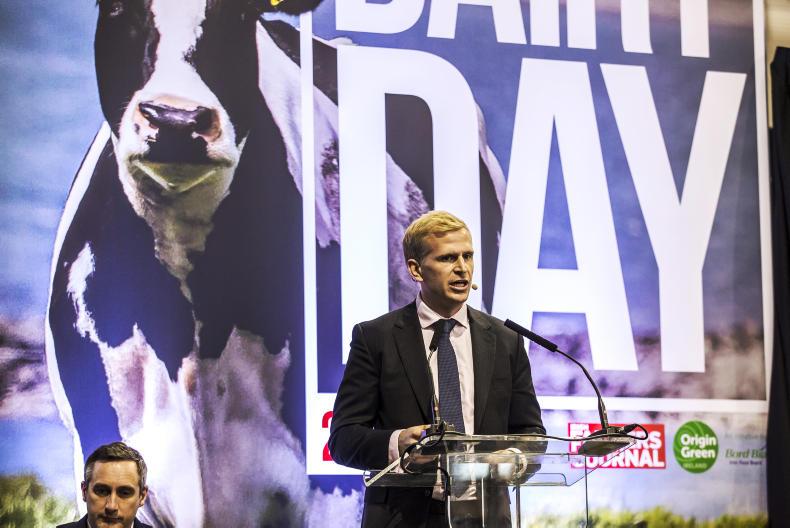Irish milk prices for next year are likely to decline to between 28c/l and 30c/l, according to John Lancaster of FC Stone.
The market analyst told visitors to Tuesday’s Dairy Day exhibition that European milk prices were overvalued compared with commodities, pointing to “an adjustment”.
Rik Loeter of Dutch-based Trigona Dairy Trade, however, was more optimistic. He said that skimmed milk powder prices were currently like a beach ball held underwater by intervention stocks, and would rise once stocks are cleared, while butter continues to fluctuate around a relatively high €4,000/t average.
Chinese demand is seen to remain high, but uncertainty lies on the supply side. Unofficial milk supply trends reported to the Brussels-based COPA Milk Group this week indicate lower production into the winter.
“French milk is back 4% in September and 5% in October,” said IFA dairy chair Tom Phelan. “Dutch milk supply is down due to phosphate restrictions but also drought. Germany expects output for 2018 to be back 1.5% on 2017. My conclusion is lower volumes for the next number of months, and scarcity always pushes up prices.”
Non-GMO feed
Another market trend discussed at the event is the growing preference for milk from cows fed with non-GMO feed.
“Within Germany about 45% of milk is non-GMO. In Austria, almost 100% of milk is now non-GMO,” said James Caffyn of food market research firm GIRA. While farmers receive a premium at first, he warned that this tends to erode as non-GMO becomes the norm.
The retail price of milk also came up in the Dairy Day discussion on environmental impacts, with food economist Ciaran Fitzgerald saying sustainable Irish milk is “devalued” when supermarkets use it as a loss-leader. “What we need are pricing structures to favour the most environmentally friendly products being produced,” he said.






 This is a subscriber-only article
This is a subscriber-only article










SHARING OPTIONS: